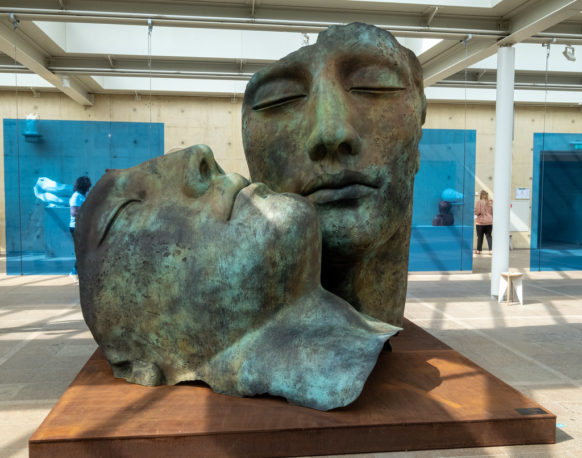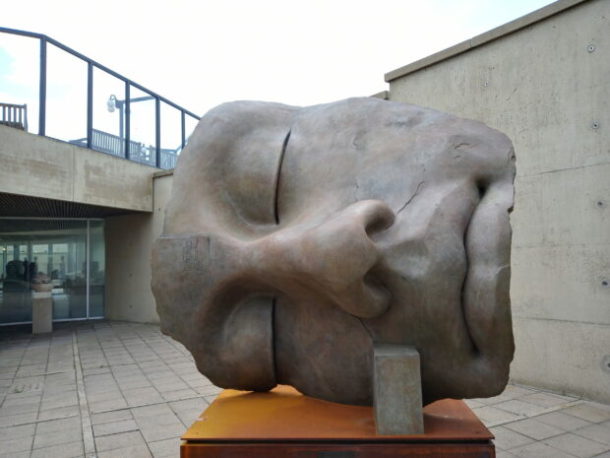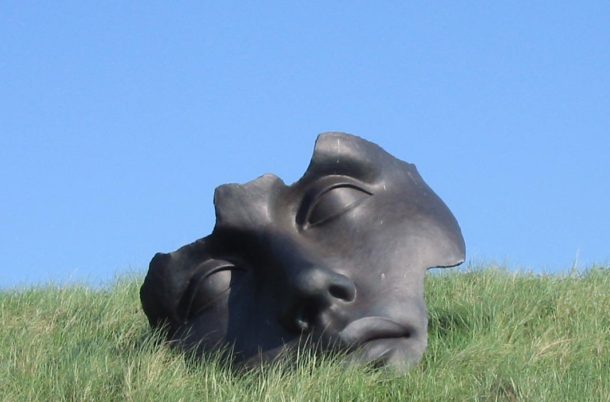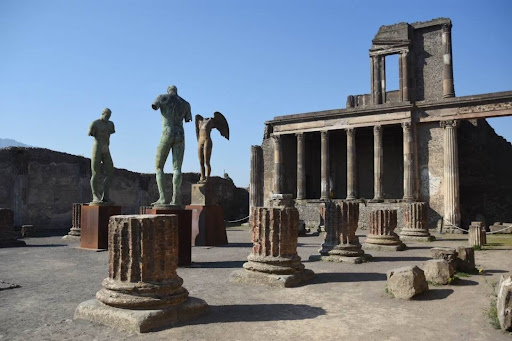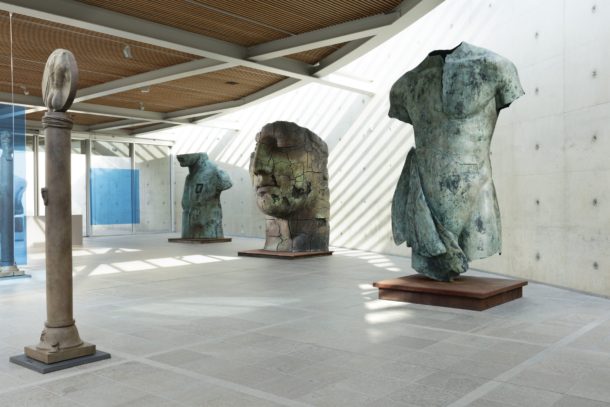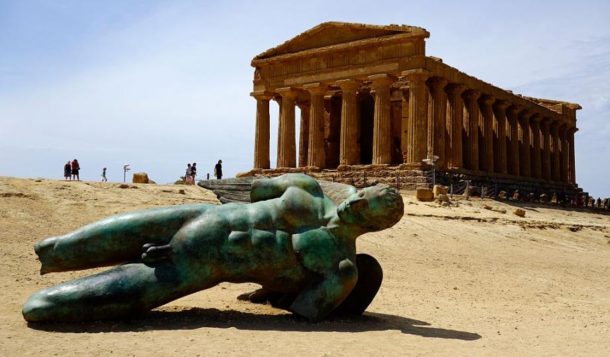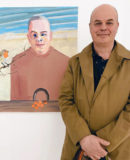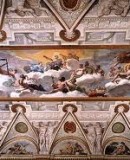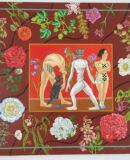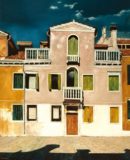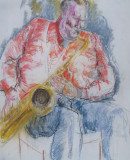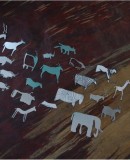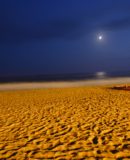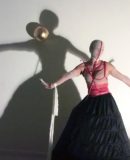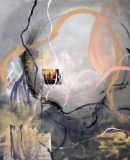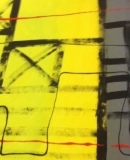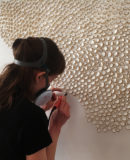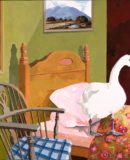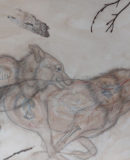World Fine Art Professionals and their Key-Pieces, 340 - Igor Mitoraj
World Fine Art Professionals and their Key-Pieces, 340 – Igor Mitoraj
For many years there has been a sculpture of a face in the dunes around the Beelden aan Zee museum in Scheveningen. This eye-catcher is called ‘Light of the Moon’ (see image 4). I was recently at a major exhibition of Mitoraj’s work at the museum titled Façade.
The exhibition shows the theatrical quality of his work and the often mythological origin of his images. The images have a melancholy, calm appearance. Wandering through the space with monumental human figures, masks, faces, torsos, feet and hands, the visitor experiences the classical beauty of antiquity.
Classic and modern
The faces of his images are sometimes bandaged, as if silenced. In the fragmentation of the images, you can see that Mitoraj’s work has not only classical features, but also modern ones. See the recesses in the marble or bronze depicting small figures or faces, sometimes like a prisoner trying to break out.
Poland
Igor Mitoraj was born in 1944 in Oederan, Saxony, near Dresden, to a Polish mother and a French father of Polish descent, who was deported by the Nazis for forced labor. Little Igor lived through the bombardment of Dresden, and no matter how small he was, it left traces in his work, see, for example, the bandaged heads. At the end of the war, back in Poland, his mother marries Czeslaw Mitoraj, who adopts him and gives him his last name.
He spent his childhood in the south, in Grojec, near Krakow. He attends the art academy in Bielsko-Biala and then he studies painting at the Krakow School of Art and the Krakow Academy of Art under the guidance of Tadeusz Kantor. He has his first solo exhibition in 1967 in the Krzysztofory Gallery in Poland.
Paris
In 1968 he moved to Paris to continue his studies at the École Nationale Supérieure des Beaux-Arts. Shortly after, he became fascinated with Latin American art and culture and decided to paint for a year and travel to Mexico. This experience brings him closer to sculpture.
In 1974 he returns to Paris and two years later he holds another solo exhibition at the La Hune Gallery, in which he also included some sculptures: the success of the exhibition convinced him to devote himself full-time to sculpture. He receives the ‘Prix de la Sculpture’ in Montrouge and the French Minister of Culture offers him a workshop in the Bateau-Lavoir of Montmartre.
Pietrasanta
He also spends long periods between New York, Greece and Tuscany; these journeys will be decisive for finding his style, between modernity and classicism. After working in terracotta and bronze, he travels to Carrara in 1979 and decides to also work in marble.
In 1983 he decides to settle in Pietrasanta, close to the mythical marble quarries of Carrara, to open a workshop there and to live between Italy and France. He remains very attached to this town in Northern Tuscany, which granted him honorary citizenship in 2001 and to which he donated his numerous works. The place is known because Michelangelo obtained the marble for his famous works of art there.
Pietrasanta is one large sculpture park, with more than seventy sculptures by Italian and international artists who have all been inspired by this creative place. The place has been populated for centuries with craftsmen and artists who worked with marble and bronze. While walking through the town you come across every square, but also unexpected places, marble or bronze masterpieces.
Gigantic works in parks and at villas
His sculptures are frequently exhibited, both in Europe and the United States. Of particular note is his successful 1989 exhibition at the New York Academy of Art.
In Italy he realizes many exhibitions in parks and historic villas where his gigantic works find the right place: in particular his evocative exhibitions in the Valley of the Temples in Agrigento (2011), and the posthumous exhibitions in Pisa (2015), in the Markets of Trajan (Mercati di Trajano) in Rome (2016), at the excavations of Pompeii (2016) and in Piazza Armerina and Noto in Sicily (2021).
The artist dies in 2014 in Paris, but it is his express wish to be buried in Pietrasanta. The funeral service took place in the cathedral.
https://ifthenisnow.eu/nl/personen/igor-mitoraj
Disclaimer: The views, opinions and positions expressed within this guest article are those of the author Walter van Teeffelen alone and do not represent those of the Marbella Marbella website. The accuracy, completeness and validity of any statements made within this article are not guaranteed. We accept no liability for any errors, omissions or representations. The copyright of this content belongs to Walter van Teeffelen and any liability with regards to infringement of intellectual property rights remains with the author.

